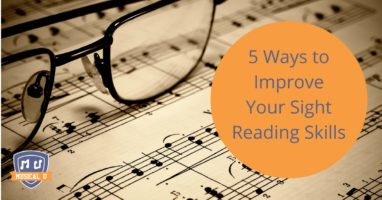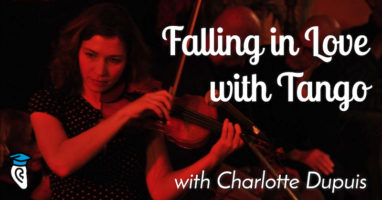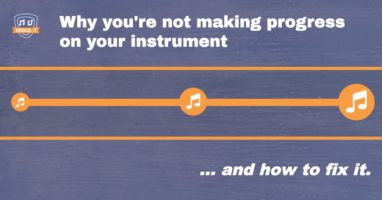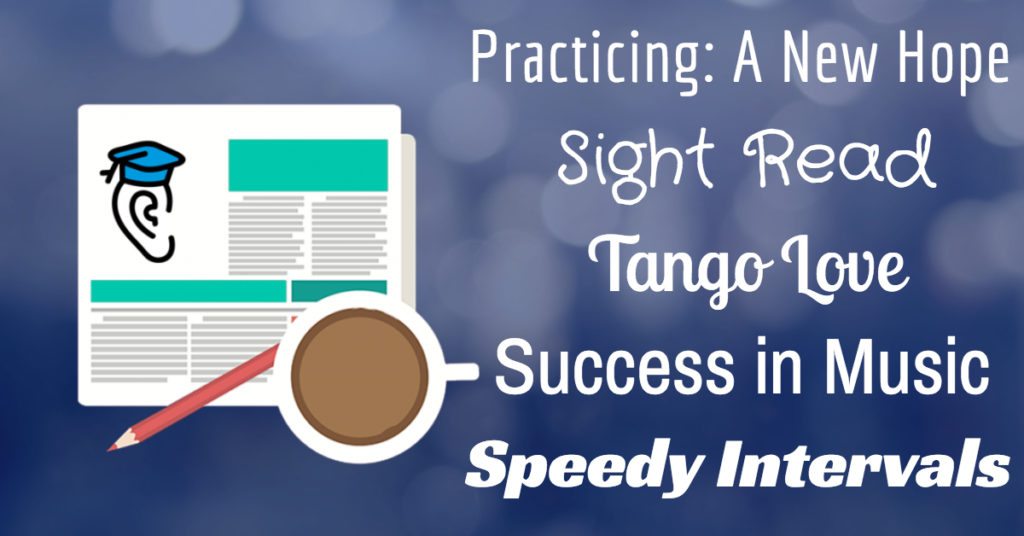Sometimes as musicians we work very hard and yet somehow seem to make little progress. Other times we find shortcuts to avoid unnecessary frustrations that don’t aid us in our ambitions. The truth is, it take tremendous hard work and dedication to be a musician. This is something that can not be avoided if you really want to hone your craft.
Yet, the good news is that learning music doesn’t have to be one big hard, frustrating slog.There are short-cuts and simple steps available to us to strengthen our skills. Add to that new research-proven ways of approaching musical training that makes all that hard work actually pay off.
The 5 Fundamentals for Success in Music
 Have you ever heard an incredible musician on the radio and wondered if you would ever be that good? Those musicians on the radio didn’t learn to do what they do overnight. The truth is that it takes years of practice, dedication, and even failure to get to a high level of musicianship. Yet success in music is no secret – musicians of all levels have relied on a progression of simple steps to move forward on their musical journey. So when you’re feeling overwhelmed by the distance from where you are to where you want to be, remember these five essential music habits for success. You may find that you are further along than you thought.
Have you ever heard an incredible musician on the radio and wondered if you would ever be that good? Those musicians on the radio didn’t learn to do what they do overnight. The truth is that it takes years of practice, dedication, and even failure to get to a high level of musicianship. Yet success in music is no secret – musicians of all levels have relied on a progression of simple steps to move forward on their musical journey. So when you’re feeling overwhelmed by the distance from where you are to where you want to be, remember these five essential music habits for success. You may find that you are further along than you thought.
Are you looking for more habits to elevate your musical success?
Music Melter has these ten tips from highly successful musicians.
Entrepreneurs focus on questions more than answers – and so should musicians! Rick Belluso of Ninebuzz explains why many productivity “tricks” are not really tricks at all – just simple solutions to common problems.
Practicing and practicing and still not getting anywhere? Ugh! The dreaded “plateau”! How can you break through to the next level? Hub Guitar discusses some of the common causes of “hitting the wall” and strategies to resolve the problem.
Strengthening Sight Reading Skills
 Yes, being a great musician on any instrument takes time and work. In some areas it’s best not to skimp. One area of focus that deserves your time and attention is improving your sight reading abilities.
Yes, being a great musician on any instrument takes time and work. In some areas it’s best not to skimp. One area of focus that deserves your time and attention is improving your sight reading abilities.
For many instrumentalists and singers, great musicianship also means being able to effortlessly sight read music. Having this skill can also be the difference between getting that job or passing that exam – or not. Musical U gives you five ways in which you can strengthen your sight reading skills and make a drastic improvement on how you play and practice your instrument.
Robert Schumann once said, “You must reach a point where you can hear music from the printed page”. Seimpi School of Music explains how to improve your sight reading.
Have you heard the story of the harpist who sight-read an entire symphony in San Francisco? This inspired YouTube user Just Another Flutist to improve her sight reading and she shares her advice in this video:
Everyone has to look at a sheet of music for the first time at some point. 1564 Studios offers these 16 tips for better sight reading:
In Love with Tango
Is it possible to have a successful career in music without setting out to be a professional musician? Of course it is – if you follow your heart! Without ever thinking of being a professional musician, Dutch violinist Charlotte Dupuis fell in love with tango music and went on to form one of Europe’s most in-demand original tango bands, Nuevo Nocturna.
 We sought out Charlotte to learn more about her, the band, and about tango music itself. Charlotte followed her heart to tango – what is the music that most pulls your heartstrings?
We sought out Charlotte to learn more about her, the band, and about tango music itself. Charlotte followed her heart to tango – what is the music that most pulls your heartstrings?
Charlotte Dupuis makes tango music on the violin. The Strad shares 12 music techniques to make tango “effects” on stringed instruments.
“What a pretty… accordion?” The bandoneon somewhat resembles an accordion but differs greatly in sound and technique. The bandoneon sound is a staple of tango music, yet most people have never even seen one! Multidisciplinary artist and educator Alejandro Pinzón, who specializes in Argentine tango, discusses this complex instrument.
What are the characteristics of tango music as opposed to say, vals or milongas? Tango Musicology breaks down tango’s characteristic time signatures and beats.
Practicing: A New Hope
Have you ever spent hours upon hours practicing the same thing over and over again only to find that you really haven’t learned a thing? It’s almost as if your brain has forgotten everything it learned!
The struggle is real.
 Every musician finds themselves losing the progress they made in the practice room at some point. The good news is that the problem isn’t you – it’s the “blocked” way you (and most musicians) practice, which means that you can solve the problem by changing the way in which you practice. Musical U proposes a better, different way of practicing that produces more measurable results.
Every musician finds themselves losing the progress they made in the practice room at some point. The good news is that the problem isn’t you – it’s the “blocked” way you (and most musicians) practice, which means that you can solve the problem by changing the way in which you practice. Musical U proposes a better, different way of practicing that produces more measurable results.
This better way to practice is known as interleaved practice. Lesson Rating discusses the benefits of interleaved practice and compares it to blocked practice.
It’s not just you – your brain actually fares better when you don’t block your practice. Smart Music explains the neuroscience behind an alternate way to practice – deliberate practice.
If you’ve ever wondered why others seem to master certain techniques or learn tough pieces of music easier and faster than you, it may be how you practice. Connolly Music shares four practice habits of successful violin players, which are applicable to all musicians.
Speedy Interval Spelling
 Interval recognition is a core skill in ear training because it develops a powerful sense of relative pitch. Yet, you must also train your brain to recognize intervals, which means learning how to “spell” the intervals with correct note names. Although we lay out a reliable process for naming intervals, this is a skill that may take a little memorization.
Interval recognition is a core skill in ear training because it develops a powerful sense of relative pitch. Yet, you must also train your brain to recognize intervals, which means learning how to “spell” the intervals with correct note names. Although we lay out a reliable process for naming intervals, this is a skill that may take a little memorization.
However, with regular practice, once you are able to quickly spell intervals you will be able to apply interval recognition skills to a whole host of musical tasks such as playing music by ear, improvising, transcribing, or composing your own music.
Not only is it important to learn to identify notes quickly, it’s equally important to be able to name them early. Joy Morin of Color In My Piano discusses the important role that note-naming plays in music.
Our post Spell Intervals Fast provides a two-step process for naming intervals. Pianist Daniel Lindstrom shares his own two steps to finding an interval quality in this video:
In order for chords to make perfect sense, you first need to understand intervals. In this video lesson, guitarist Ben Levin explains how to name intervals.
Smarter, not Harder
Smashing Pumpkins frontman Billy Corgan once asked, “If practice makes perfect, and no one’s perfect, then why practice?” So is perfection really the goal?
In our journeys as musicians, we find that there are some skills which require our attention and practice more than others. Thankfully, there are shortcuts and simple steps we can take to make honing these important skills a little easier.
So when we adopt the attitude of appreciating our improvement – and sacrificing the old habits in order to learn more effectively – we find more enjoyment in the process of always growing, and reap the rewards.
From all of us at Easy Ear Training and Musical U, we wish you a very merry Christmas and a happy holiday season!







